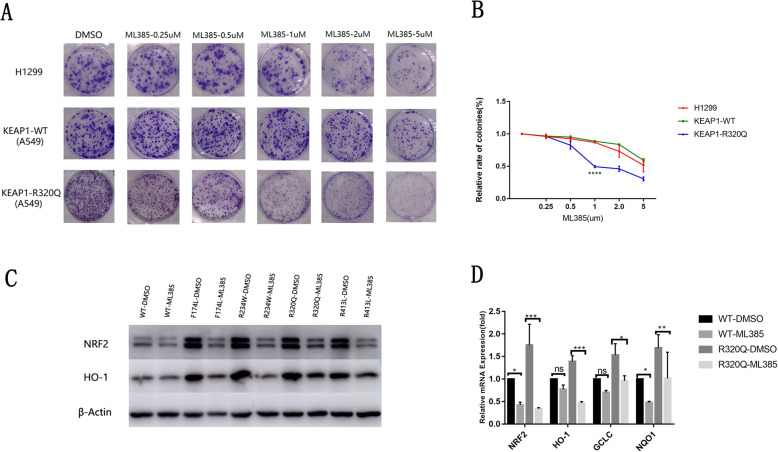Fig. 4.
NRF2 inhibitor ML385 effectively inhibited proliferation of lung cancer cells carrying KEAP1 mutations. a The number of formed colonies was decreased in the three groups as the dose of ML385 increased. When the lung cancer cell lines were treated with ML385 at a low dose (0.5 or 1.0 μM/L) the proliferation of A549 lung cancer cells transfected with the R320Q KEAP1 mutant was more significantly inhibited than that of A549 cells transfected with wild-type (WT)KEAP1 or that of H1299 lung cancer cells, which carried neither KEAP1 nor NRF2 mutation. Three groups of cells were treated with different doses of ML385 for 72 h. At the end of treatment, the medium was added and cells were further incubated for 8–10 days and stained with crystal violet. b The number of formed coloniesrapidly deceased in A549 cells transfected with the R320Q KEAP1 mutant after treatment with ML385 compared with that in A549 cells transfected with WT KEAP1 or H1299 lung cancer cells. Clonal formation rate = effective clones/plating cell numbers × 100% (*P < 0.05). c Protein levels of NRF2 and HO-1 were decreased in KEAP1 mutant cells after drug intervention. Total protein was extracted after 3 days of treatment with 1 μM ML385. d The mRNA levels of NRF2 and HO-1 were decreased in KEAP1 mutant cells. Total RNA was extracted after 3 days of treatment with 1 μMML385. Mean ± SEM are reported (* P < 0.05, ** P < 0.01, *** P < 0.001)

